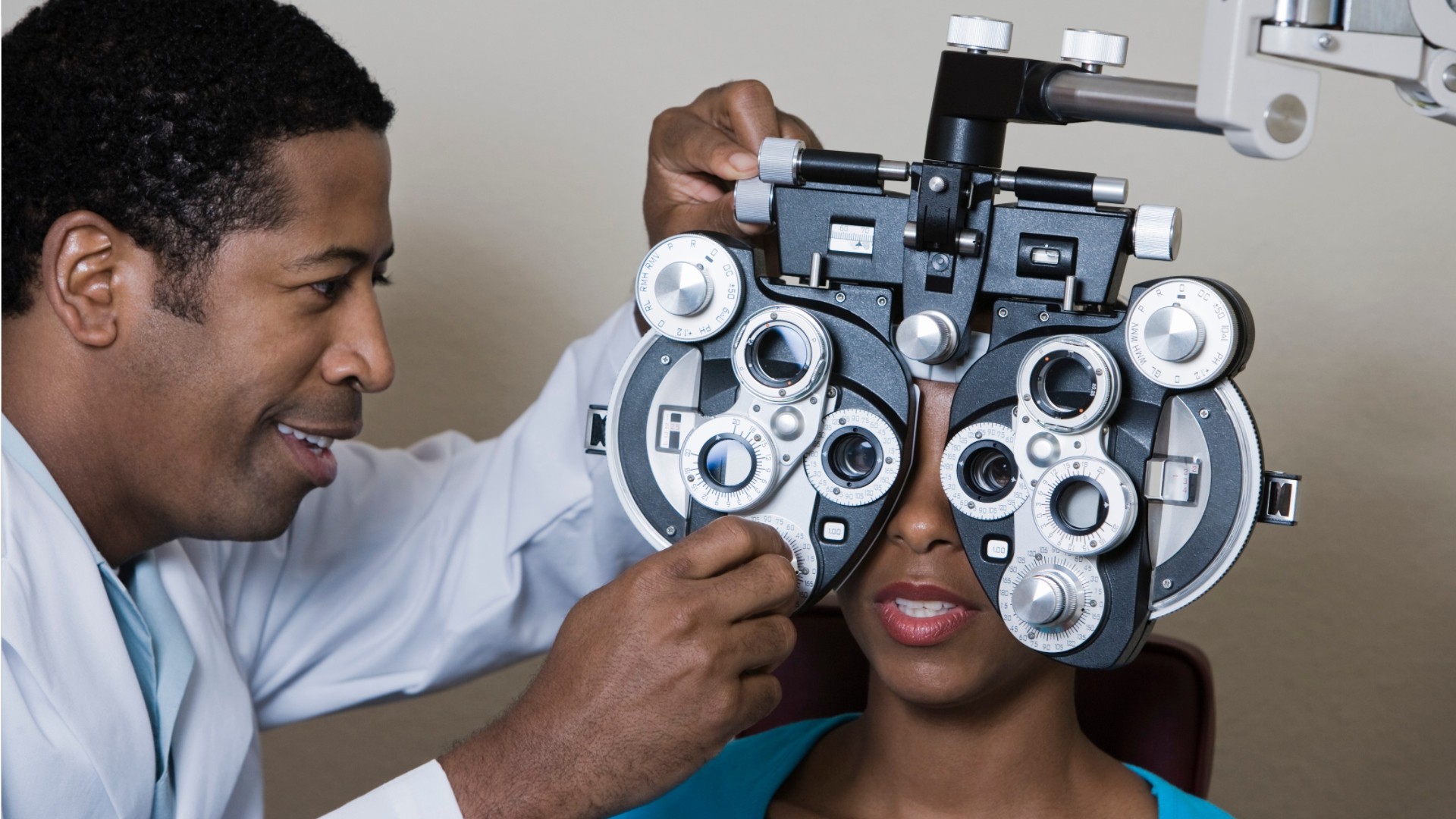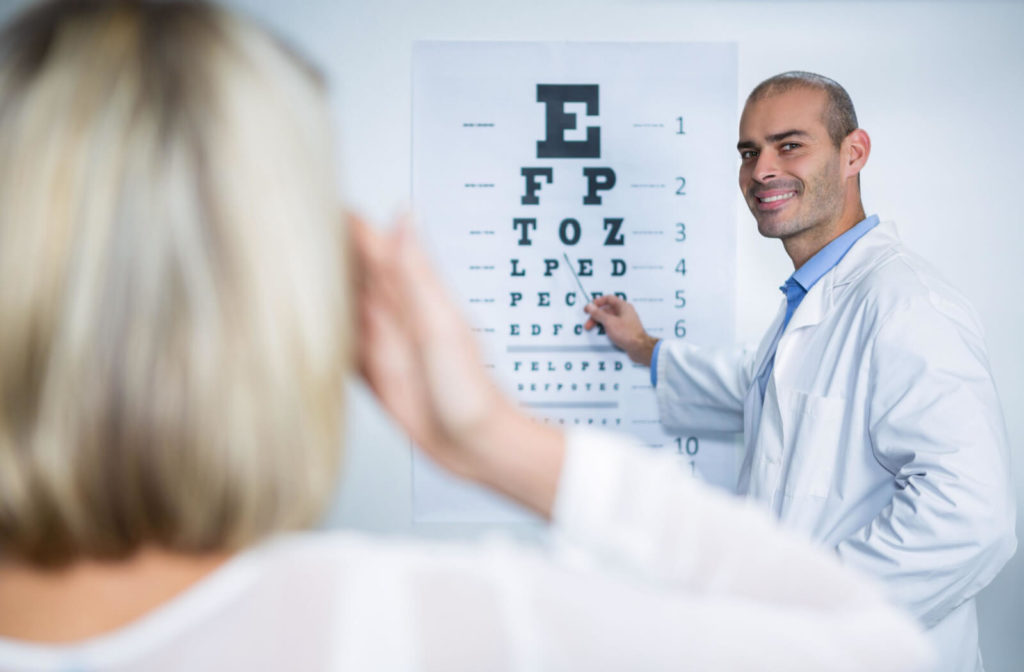Discover the very best Optometrist Chino for Comprehensive Eye Care
Discover the very best Optometrist Chino for Comprehensive Eye Care
Blog Article
Discovering the Most Current Technological Improvements in Optometry and What They Mean for Optometrists
From the precision of Optical Coherence Tomography to the nuanced insights used by AI-driven analysis devices, these advancements are setting new requirements in client assessment and therapy. As these advancements penetrate the method, optometrists are encountered with the challenge of welcoming these tools to boost person results.
Innovations in Diagnostic Devices
Progressing the field of optometry, technologies in analysis devices have revolutionized the means eye care experts analyze and diagnose ocular problems and visual impairments. The previous decade has actually witnessed considerable technical advancements, making it possible for more detailed and exact examinations. Optical Comprehensibility Tomography (OCT), for instance, offers high-resolution cross-sectional pictures of the retina, enabling the very early detection of illness such as glaucoma and age-related macular degeneration. This non-invasive imaging method has ended up being crucial in modern optometric practice.
Another key technology is the intro of advanced corneal topography systems, which map the surface curvature of the cornea with accuracy. These devices are particularly valuable for fitting call lenses and identifying corneal problems. Additionally, digital retinal imaging has changed conventional ophthalmoscopy, supplying comprehensive, breathtaking sights of the retina that promote thorough visual evaluations.
The development of wavefront aberrometry has likewise been crucial, enabling the evaluation of refractive mistakes with unequaled precision (Eye Doctor). This modern technology aids in personalizing restorative lenses and enhancing medical outcomes for refractive surgeries. Collectively, these analysis advancements equip optometrists to supply premium individual treatment, making sure early treatment and tailored treatment methods, ultimately boosting visual health and wellness outcomes
AI in Person Monitoring
Structure on the foundation of advanced diagnostic tools, the incorporation of artificial knowledge (AI) in person management stands for a transformative jump for optometry. AI systems are progressively used to enhance effectiveness, precision, and personalization in client care. By assessing vast quantities of data, AI can recognize patterns and predict prospective eye conditions, allowing optometrists to tailor interventions better. This capability is essential in managing persistent eye conditions such as glaucoma and diabetic person retinopathy, where very early discovery and constant surveillance are vital.
Furthermore, AI-driven systems facilitate structured client communications and administrative processes. Automated scheduling, online consultations, and individualized follow-up plans not only improve patient contentment but additionally maximize time monitoring for experts. These systems can triage individuals based on the necessity of their conditions, ensuring that those in essential requirement receive punctual focus.
Moreover, AI improves decision-making by giving optometrists with evidence-based referrals and therapy paths. By integrating information from electronic health and wellness documents, AI tools provide insights that educate medical decisions, minimizing the risk of mistakes and improving client results. As AI continues to develop, its duty in person management will likely broaden, improving the landscape of optometric treatment.
Advancements in Retinal Imaging
In the world of optometry, retinal imaging has experienced amazing technical developments that are boosting diagnostic capabilities and patient treatment. Developments such as Optical Coherence Tomography (OCT) and fundus digital photography have actually changed how optometrists visualize and examine the retina. OCT, in certain, supplies high-resolution, cross-sectional photos of the retina, permitting the in-depth assessment of its layers. This capacity is indispensable for early discovery and monitoring of problems like glaucoma, diabetic retinopathy, and age-related macular degeneration.
Enhanced imaging methods like OCT angiography are more refining analysis accuracy. This non-invasive strategy maps blood flow in the retina, providing vital insights into vascular health and wellness without the requirement for dye injections. Furthermore, adaptive optics innovation is being integrated into retinal imaging systems to fix ocular aberrations, providing unprecedented picture clearness. Such improvements help with the recognition of minute retinal changes that could indicate condition development.
Additionally, improvements in fabricated knowledge are enhancing retinal imaging by making it possible for automatic evaluation of large datasets. These systems assist eye doctors in identifying patterns a measure of pathology, therefore boosting diagnostic accuracy and performance. Jointly, these advancements are transforming retinal imaging into a keystone of modern-day eye treatment, enhancing outcomes and increasing restorative opportunities.
Teleoptometry's Growing Duty
Teleoptometry is significantly coming to be a vital part of eye treatment, driven by advancements in electronic interaction and diagnostic devices. This is particularly useful in underserved and country locations where access to specialized eye care is frequently limited.
The integration of man-made intelligence (AI) more enhances teleoptometry, making it possible for the analysis of aesthetic data and assisting in the discovery of ocular problems such as glaucoma and diabetic person retinopathy. AI-powered formulas can swiftly translate complex imaging data, giving eye doctors with useful insights that boost scientific decision-making.
In addition, teleoptometry try this out sustains continuity of treatment with smooth combination with electronic wellness records (EHRs), allowing optometrists to maintain extensive person histories. When seeking advice from with various practitioners., this makes certain that individuals get regular and customized care also.
Regardless of these benefits, difficulties continue to be, consisting of ensuring information safety and handling person assumptions. However, teleoptometry represents a significant stride towards even more available, effective, and patient-centered eye treatment. As technology develops, its function is positioned to increase better.

Future Fads in Eye Care
A myriad of ingenious patterns is readied to reshape the future of eye treatment, driven by technological innovations and the evolving needs of clients. One considerable trend is the integration of artificial intelligence (AI) in diagnostics, which assures to improve the precision and effectiveness of eye assessments. AI formulas can examine vast quantities of data from retinal photos, potentially finding conditions like diabetic retinopathy and glaucoma earlier than typical techniques.
Furthermore, customized medicine is getting grip in optometry, with genetic screening educating personalized therapy plans. This approach intends to optimize patient end results by tailoring interventions to individual hereditary accounts. Wearable innovation, such as clever get in touch with lenses, is additionally imminent, providing real-time monitoring of intraocular stress or sugar levels, hence supplying continuous understandings into systemic and ocular health and wellness.
The fostering of augmented reality (AR) and virtual fact (VIRTUAL REALITY) in training and person education is an additional emerging fad. These technologies supply immersive experiences that can enhance understanding and abilities both for eye doctors and individuals. As these patterns evolve, eye doctors should remain abreast of technical improvements resource to supply sophisticated care, making sure enhanced client outcomes and contentment in the dynamic landscape of eye care.
Verdict

Collectively, these analysis innovations encourage optometrists to deliver exceptional patient treatment, making sure early intervention and tailored treatment methods, ultimately improving aesthetic wellness outcomes.

As these innovations continue to progress, eye doctors must adjust and integrate them right into technique, ultimately enhancing operations effectiveness and boosting the standard of eye care delivered to people.
Report this page